As nomadic travelers (and frequent cruisers), we’ve been to Barcelona many times. We’ve stayed in several different areas, but one neighborhood is our favorite. Its broad boulevards, super-wide sidewalks, chamfered blocks and elegant parks make us feel relaxed and far away from the crowded touristy areas near La Rambla and the Gothic Quarter. It’s lively during the day as locals go about their business, and quiet at night. But my favorite part is the stunning architecture in Barcelona’s Eixample neighborhood.
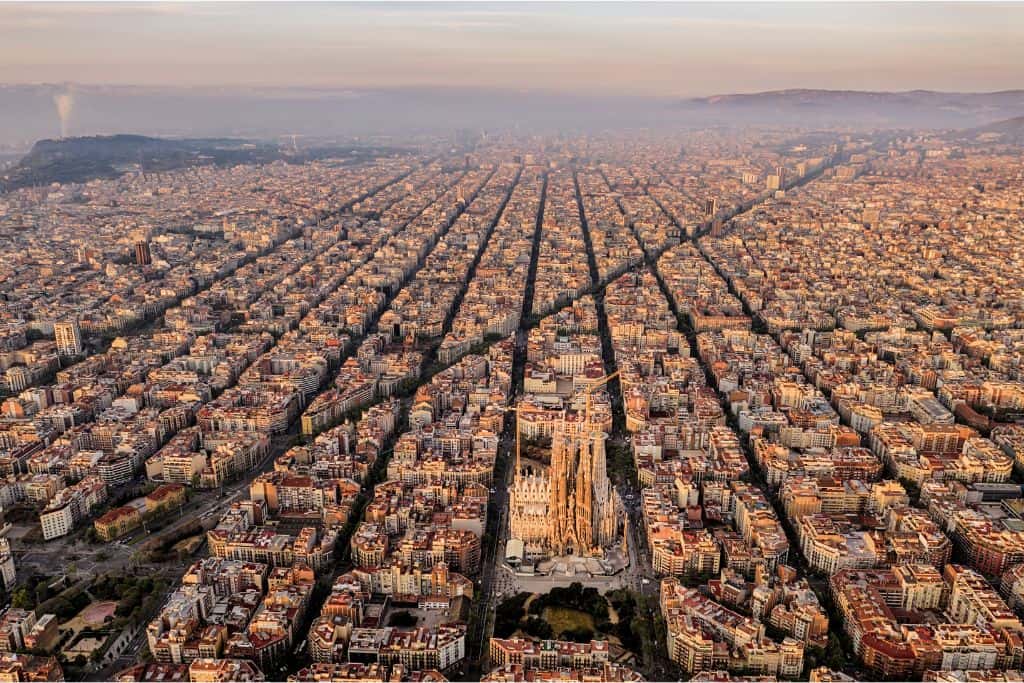
boulevard (Avinguda de Gaudí) leads straight to the Basilica of Sagrada Familia.
The Future of the Modern City
Barcelona in the 1850’s was on the verge of collapse. The city had experienced massive growth but the entire population – rich and poor alike – was confined within the old city walls of Ciutat Vella. Traffic and hygiene were horrible, disease was rampant, and there was just no more room to grow. Residents demanded that the city tear down the walls, and after ten years, the city agreed.
A Catalan architect (Ildefons Cerdà i Sunyer) proposed a radical plan for expansion. The walls were dismantled, and a new area was laid out in a grid system with wide avenues and around 900 octagonal blocks, something completely novel and innovative. He literally created the concept – and the word – “urbanization.” Each octagonal block is known as a “manzana” (“apple”); each corner was cut diagonally, or “chamfered,” which made it easier for traffic to navigate.
Expansion and Modernism
As people (mostly the wealthy, rich from recent industrialization) moved to the new area, known as “Eixample” (“expansion”), it became a competition to have the biggest and the best home. Extravagant buildings with large balconies and unique architectural details were erected. Today it’s a leafy, affluent area filled with Modernist masterpieces by not only Gaudí, but several other notable Catalan architects. We couldn’t get enough of all the beautiful architecture.
What is Modernism Anyway?
Modernism, or Catalan Modernisme, flourished in Barcelona during the late 19th and early 20th centuries, blending functionality with artistic expression. Eixample became a canvas for architects who pushed boundaries, creating buildings that are not only practical but also visually stunning.
Some hallmark features of Modernist architecture in Eixample include:
- Elaborate ironwork on doors and balconies, often inspired by natural forms
- Colorful mosaics and ceramic tiles
- Organic shapes, curved lines, and asymmetry
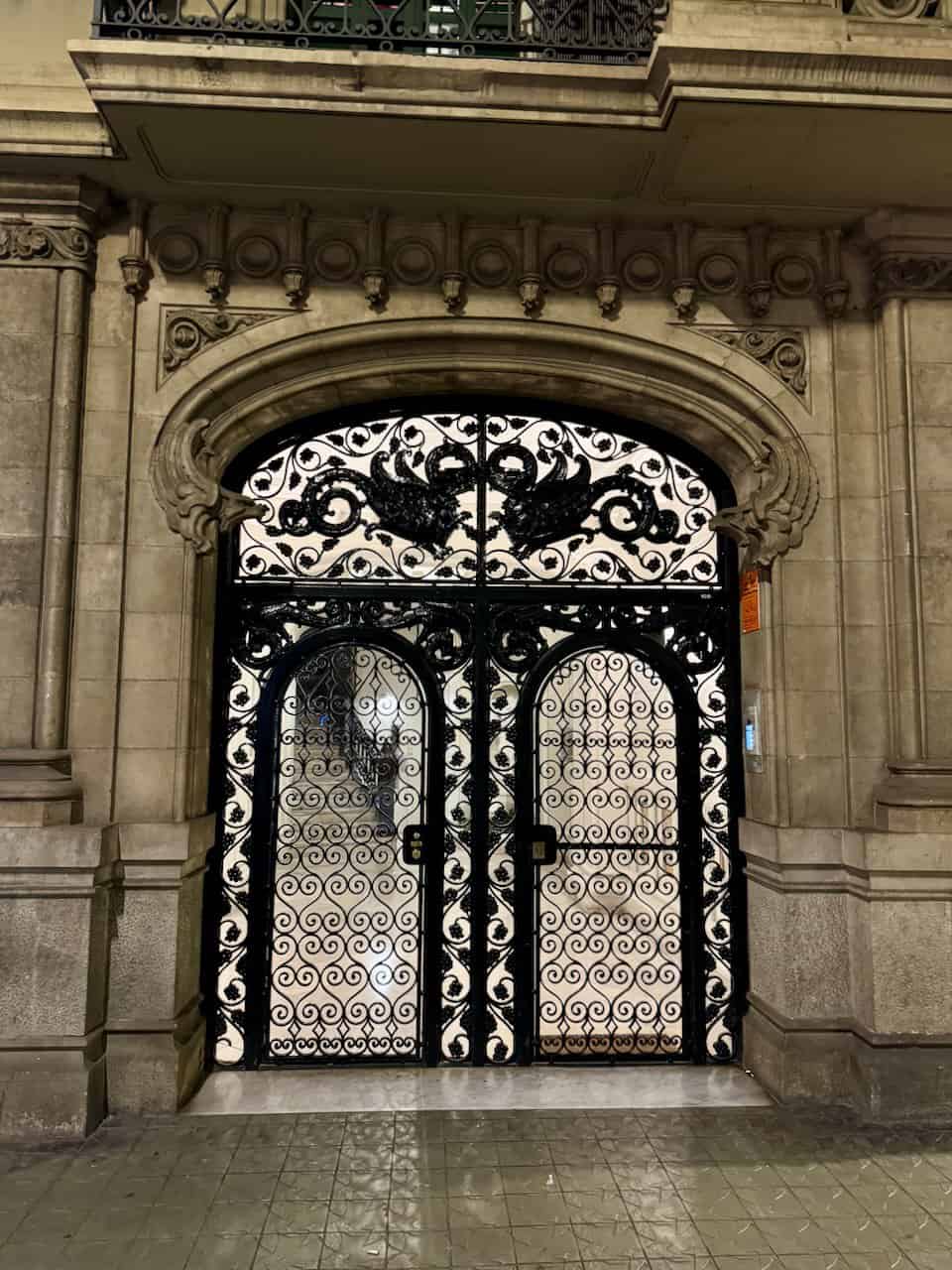
As you wander through Eixample, take time to admire the iron doors and balconies that adorn many buildings. These pieces of art often incorporate floral patterns, geometric designs, and a level of craftsmanship that captures the spirit of Modernism. Each door and balcony is a unique expression of the architect’s vision, enhancing the neighborhood’s charm.
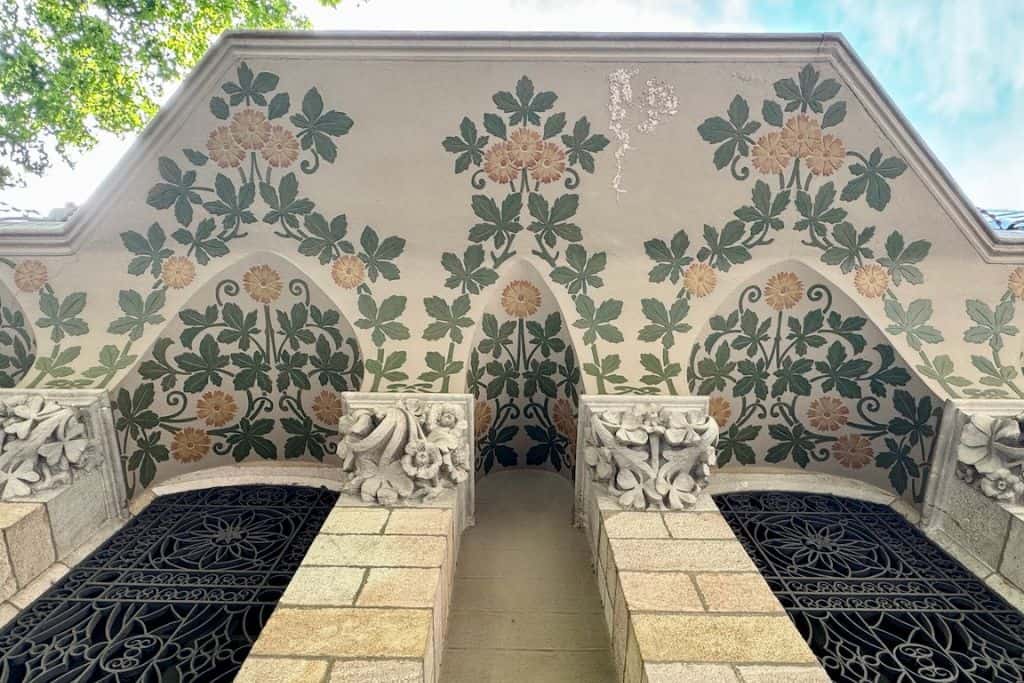

Barcelona’s Most Notable Modernist Buildings
Eixample is home to some of the most famous Modernist landmarks in Barcelona. Here are a few must-see gems:
Casa Batlló
Designed by Antoni Gaudí, who loved to incorporate details from the natural world, this whimsical building is adorned with bone-like columns and a colorful, scaly roof that evokes the image of a dragon.

La Pedrera (Casa Milà)
Another Gaudí creation, this undulating stone building boasts wrought-iron balconies that look like waves frozen in motion.
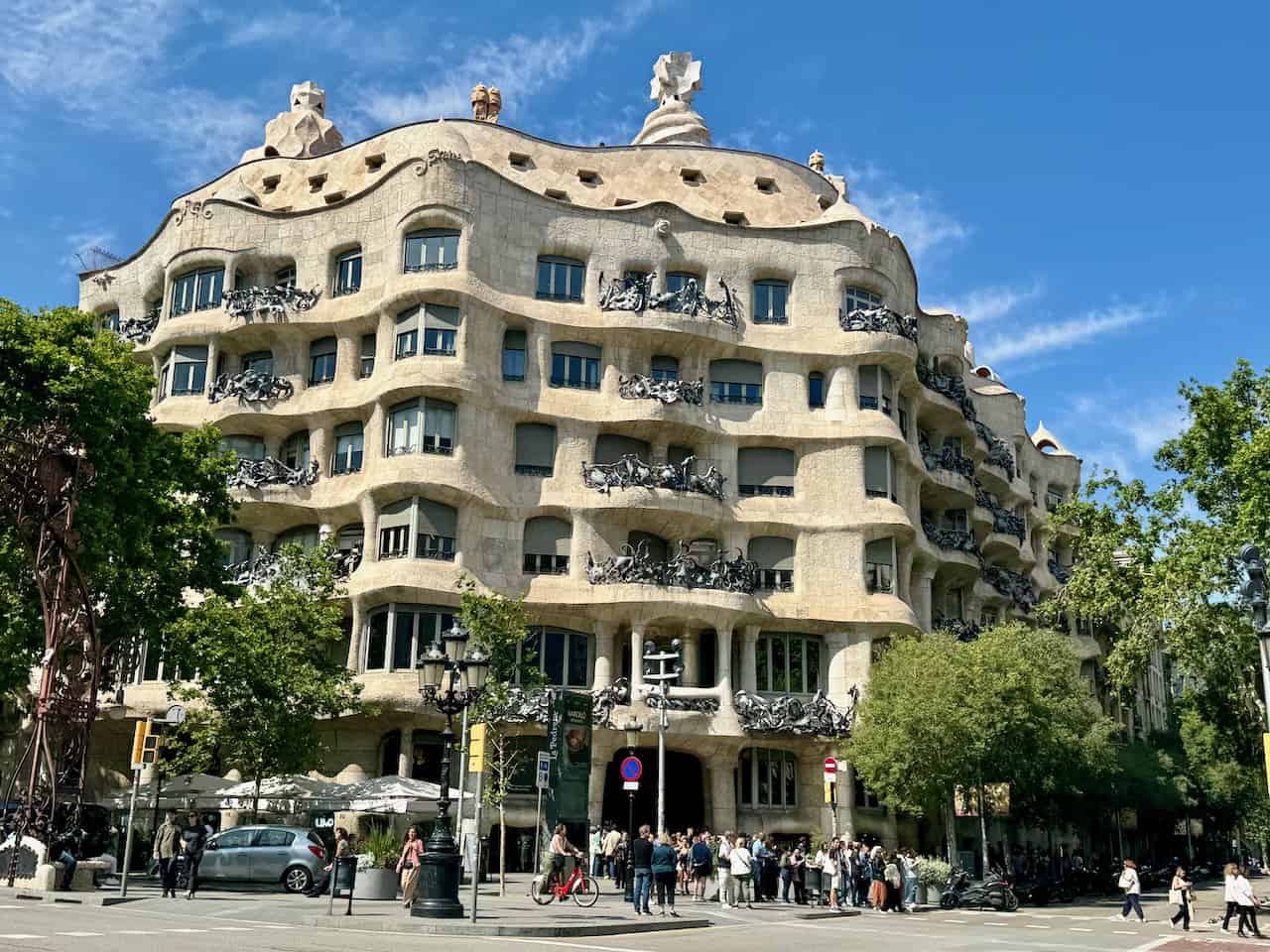
Casa Amatller
Designed by Josep Puig i Cadafalch, this building combines Modernist elements with a Neo-Gothic twist, creating a striking facade reminiscent of a gingerbread house. Casa Amatller is adjacent to Gaudí’s Casa Batlló on a magnificent Modernist block known as the “Block of Discord.”
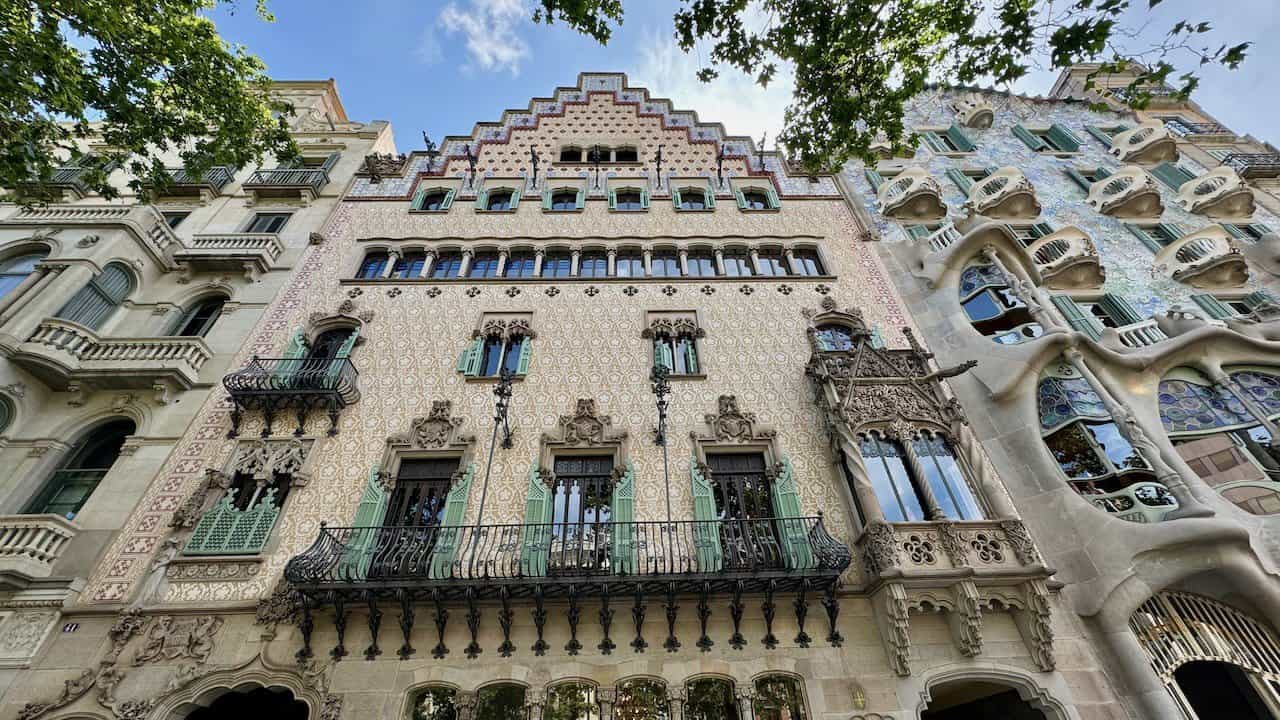
Casa Lleó Morera
A masterpiece by Lluís Domènech i Montaner, this building features intricate mosaics, stained glass, and sculptures that celebrate Catalan craftsmanship.

Hospital de Sant Pau
Located on the edge of Eixample, this stunning complex, also designed by Domènech i Montaner, is a UNESCO World Heritage Site known for its colorful tile work and harmonious design. Arched windows give it a Moorish feel.

Casa de les Punxes
Designed by Josep Puig i Cadafalch and located in the intersection between the streets of Rosselló, Bruc and the Avinguda Diagonal, this building has striking turrets that give it a medieval Gothic vibe.
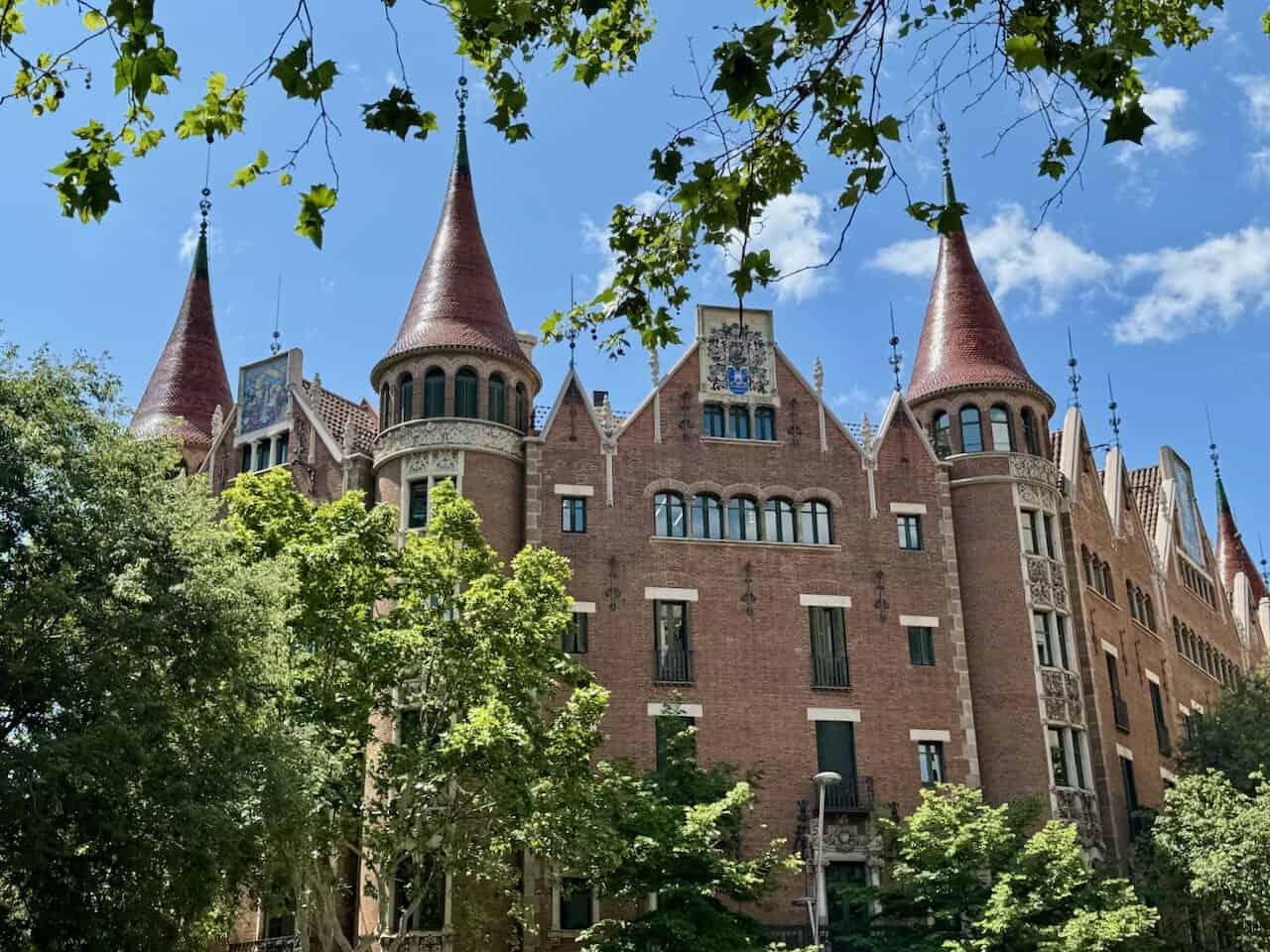
Cases Torres Germans Building
Located on the chamfer, this beautiful residential building was designed by the architect Jaume Torres Grau and completed in the early 1900s. It sits on two streets as well as the chamfer and has a stepped gable roof and balconies enclosed with wrought iron.
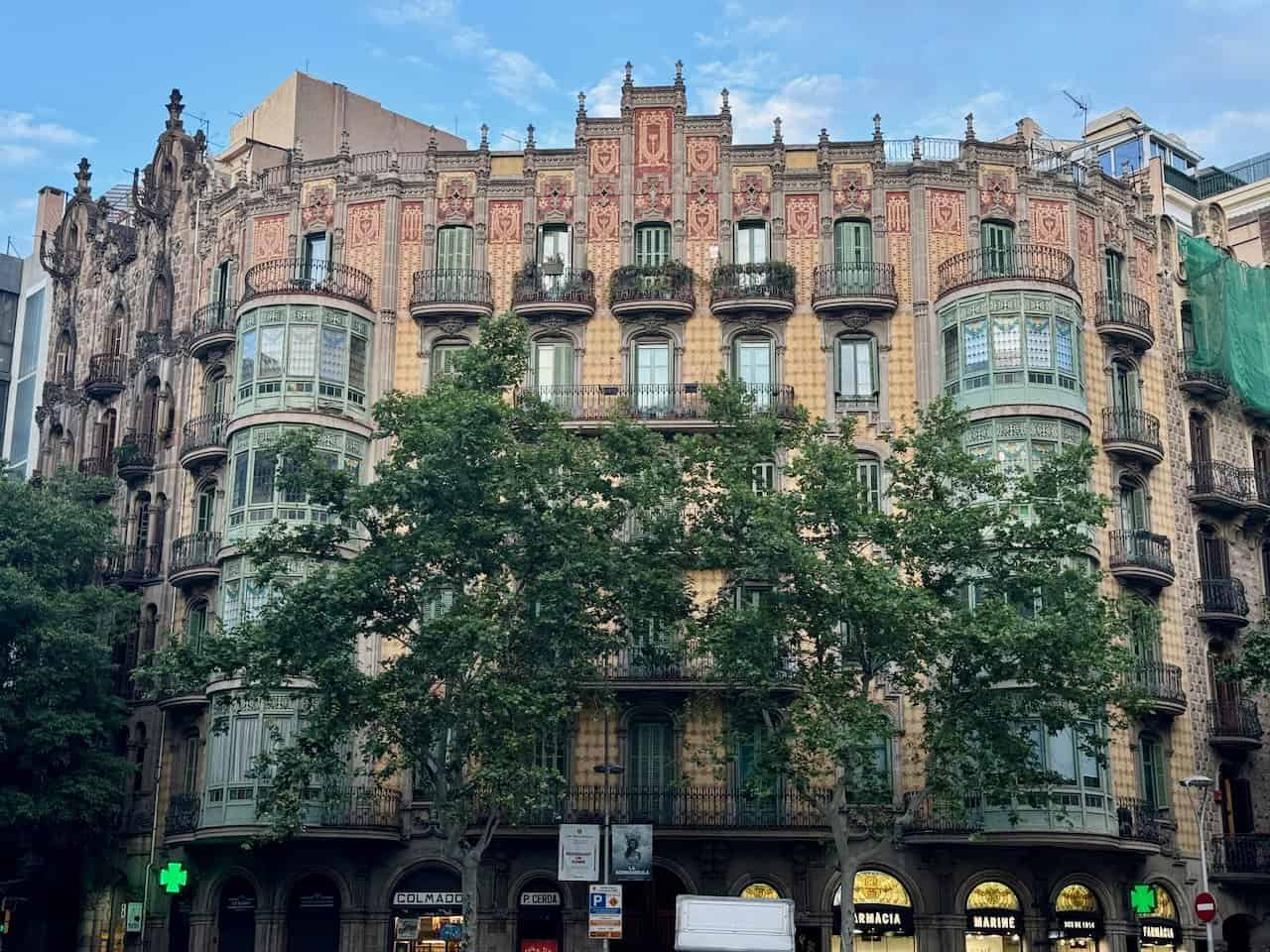
Casa Malagrida
Designed by the architect Joaquim Codina at the start of the 1900s and embellished with elegant columns and wrought iron balconies, Casa Malagrida sits on the Passeig de Gràcia.
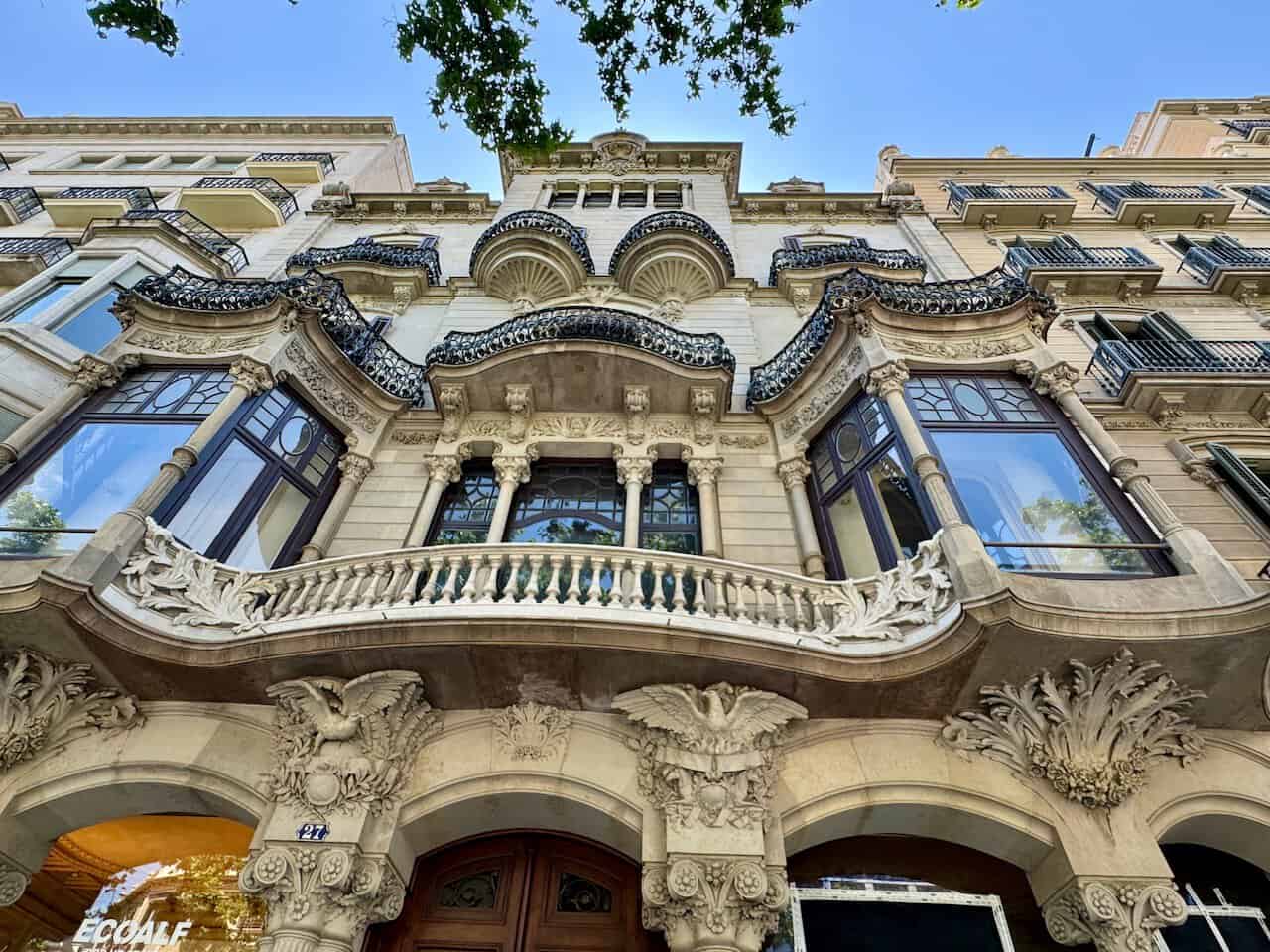
Cases Rocamora
Cases Rocamora consists of three buildings that comprise one of the largest residential complexes on Passeig de Gràcia. Five domes with orange ceramic tiles top the complex and give it the feel of a medieval Gothic fortress.
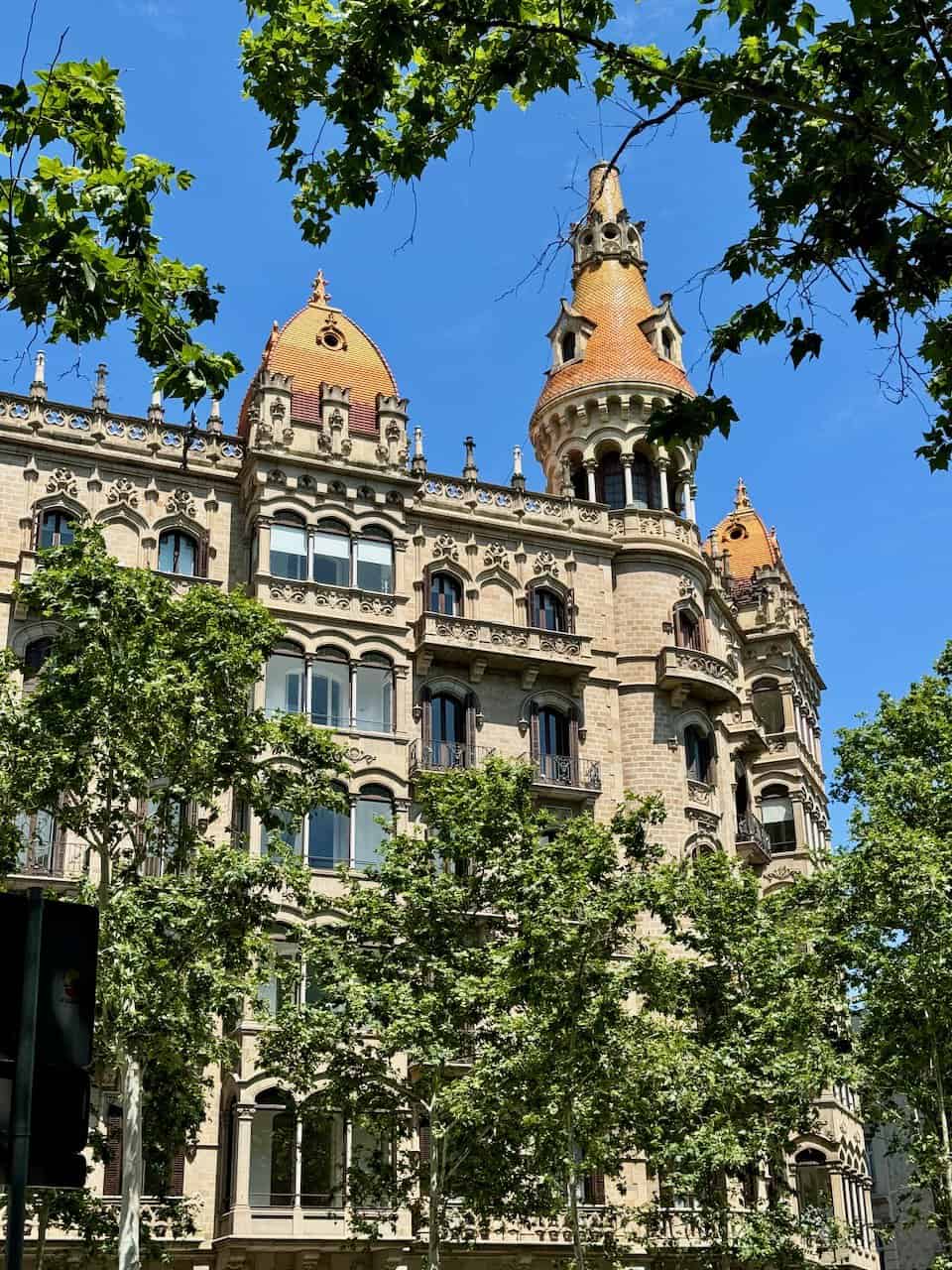
The Cerdà Houses
Designed by Antoni Valls Galí, the Cerdà Houses are adorned with balustrades and frescoes by Rafaelo Beltrani, an Italian artist who lived in Barcelona.
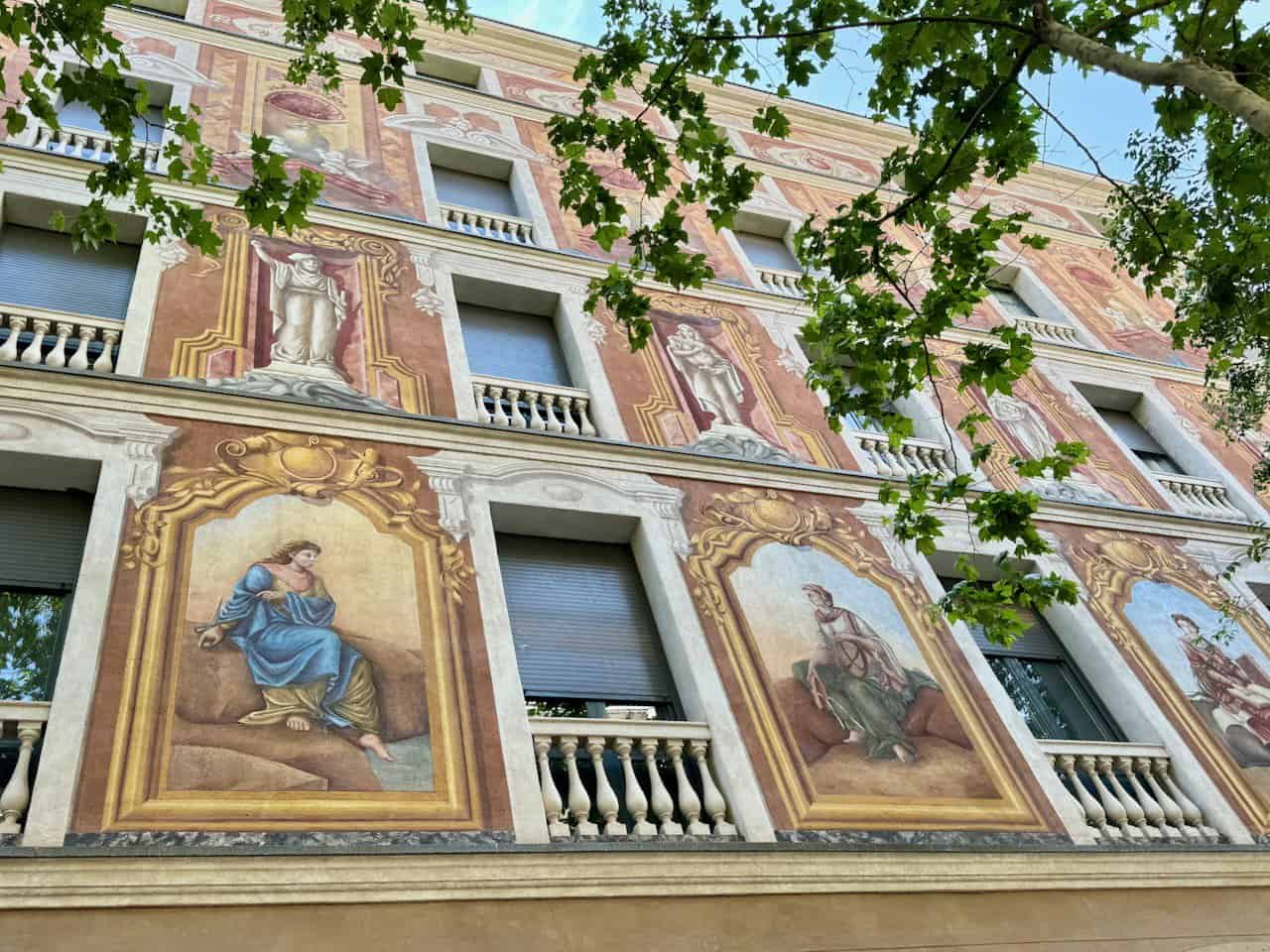
Casa Maldonado (Casa Cuyàs Ferrer)
I love the elegant round crown-like tower on the corner of the Casa Cuyàs Ferrer.

Casa Roviralta
Now a restaurant, this historical home also known as “the White Friar” was completed in the early 1900’s. The architect was Joan Rubió.
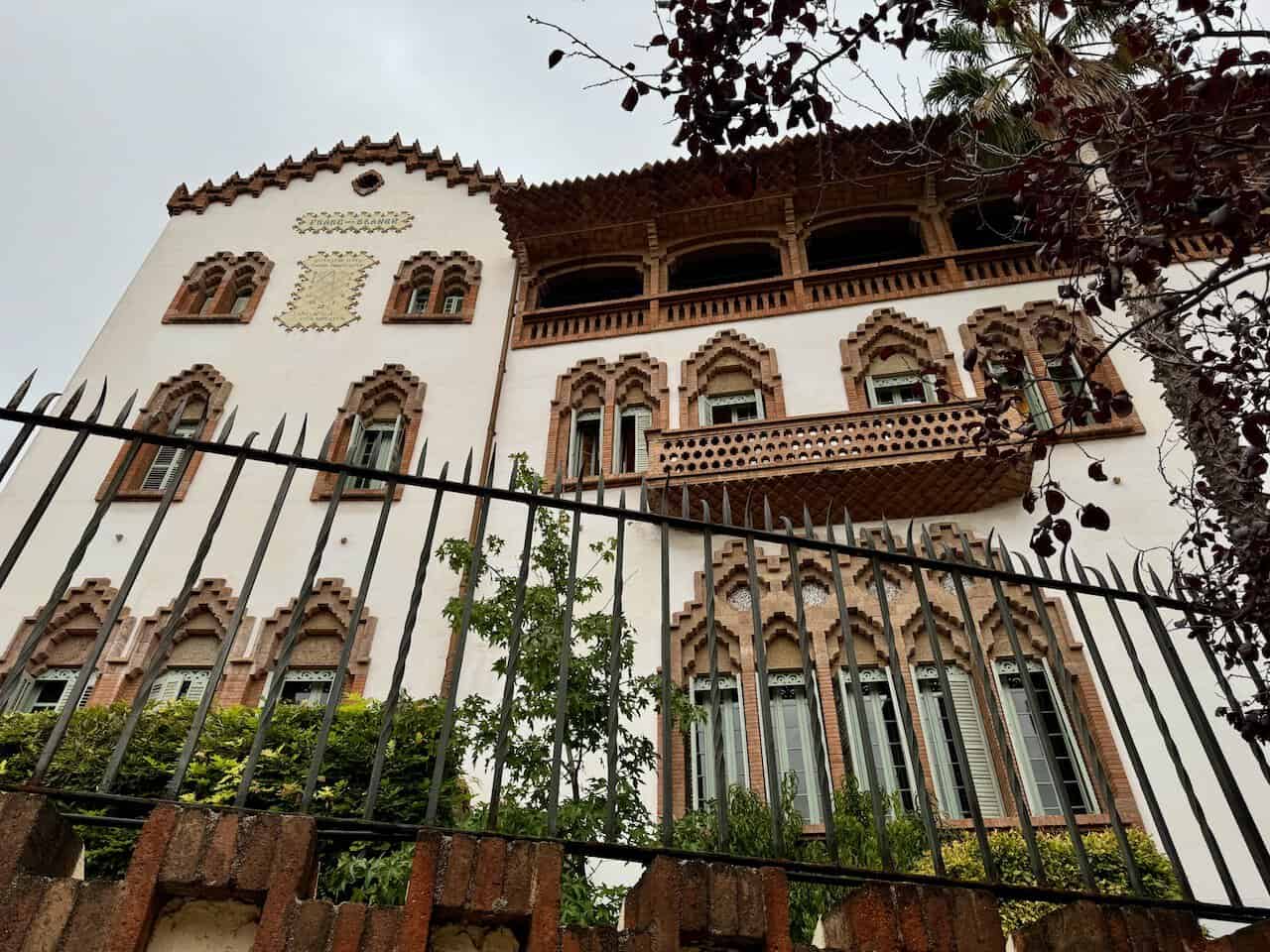
Hotel Casa Fuster
Another impressive building by famous Catalan architect Lluís Domènech i Montaner, Casa Fuster is a Modernist icon on Passeig de Gràcia.
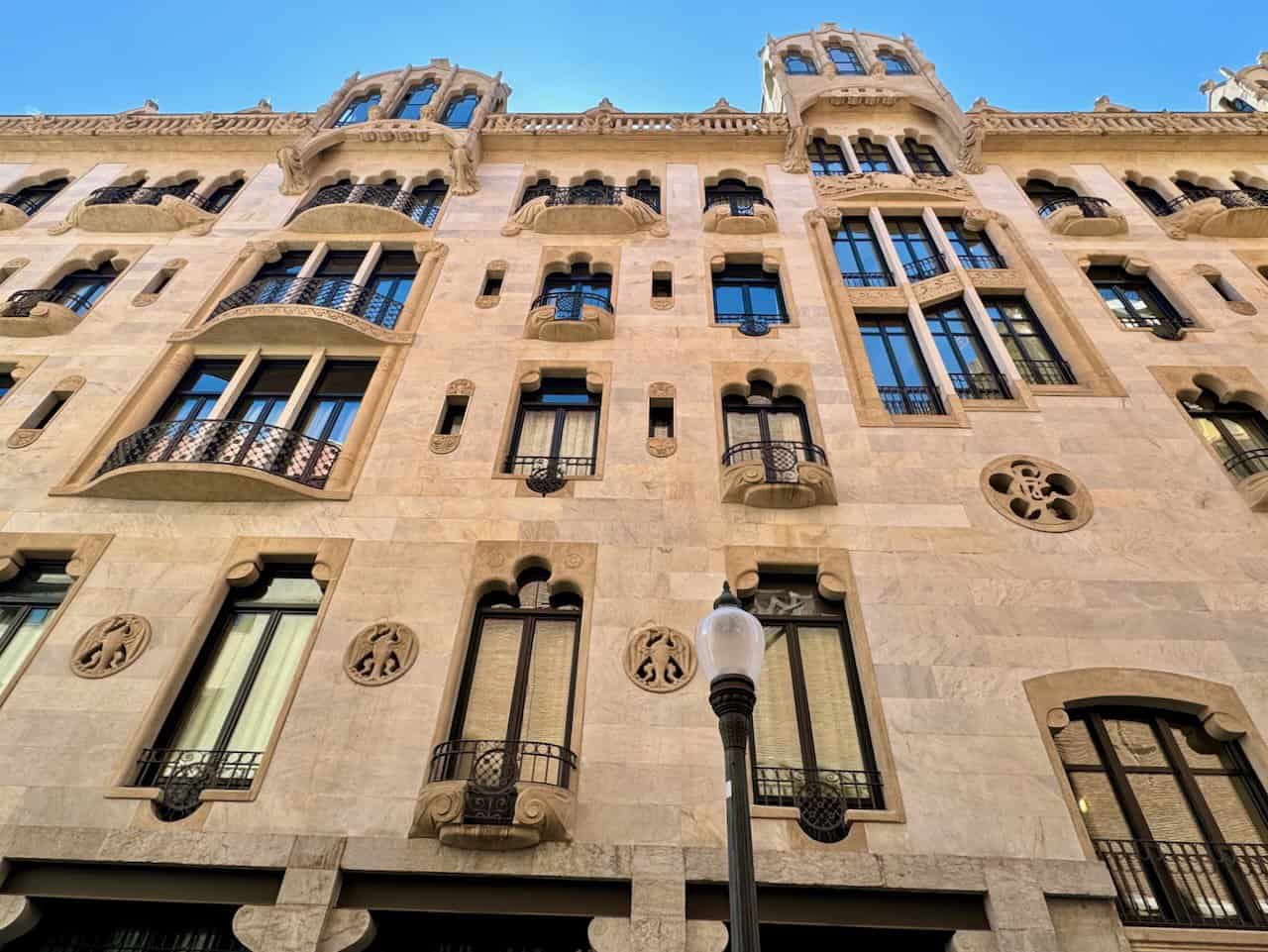
Basilica de Sagrada Familia
No list of Modernist buildings in Barcelona would be complete without Gaudí’s masterpiece and life’s work. The Basilica de Sagrada Familia is perpetually under construction, but estimates of its completion hover around 2030. However, the magnificent interior is complete and you can take a tour of it. We highly recommend this Skip the Line Tour of Park Güell and Sagrada Familia.

Gaudí and Modernism Walking Tours in Barcelona
There are walking tours designed to see some of the most impressive and notable Modernist buildings, many by Gaudí. As you walk, you will notice all the iron doors and balconies and other beautiful features of this style in many buildings.
➡️ 3-Hr Barcelona, Modernism and Gaudí Walking Tour
Why Eixample Should Be on Your Barcelona Itinerary
Eixample isn’t just a neighborhood; it’s an open-air museum of architectural brilliance. From Gaudí’s iconic works to lesser-known gems, its streets offer a feast for the eyes and a glimpse into Barcelona’s rich cultural history. Broad, open boulevards make it eminently walkable with lots of room to breathe. Whether you’re strolling along Passeig de Gràcia or exploring quieter corners, the Modernist architecture in Barcelona’s Eixample neighborhood is sure to leave you inspired.
For a bottomless feed of incredible Barcelona architecture, check out this fantastic Instagram.






